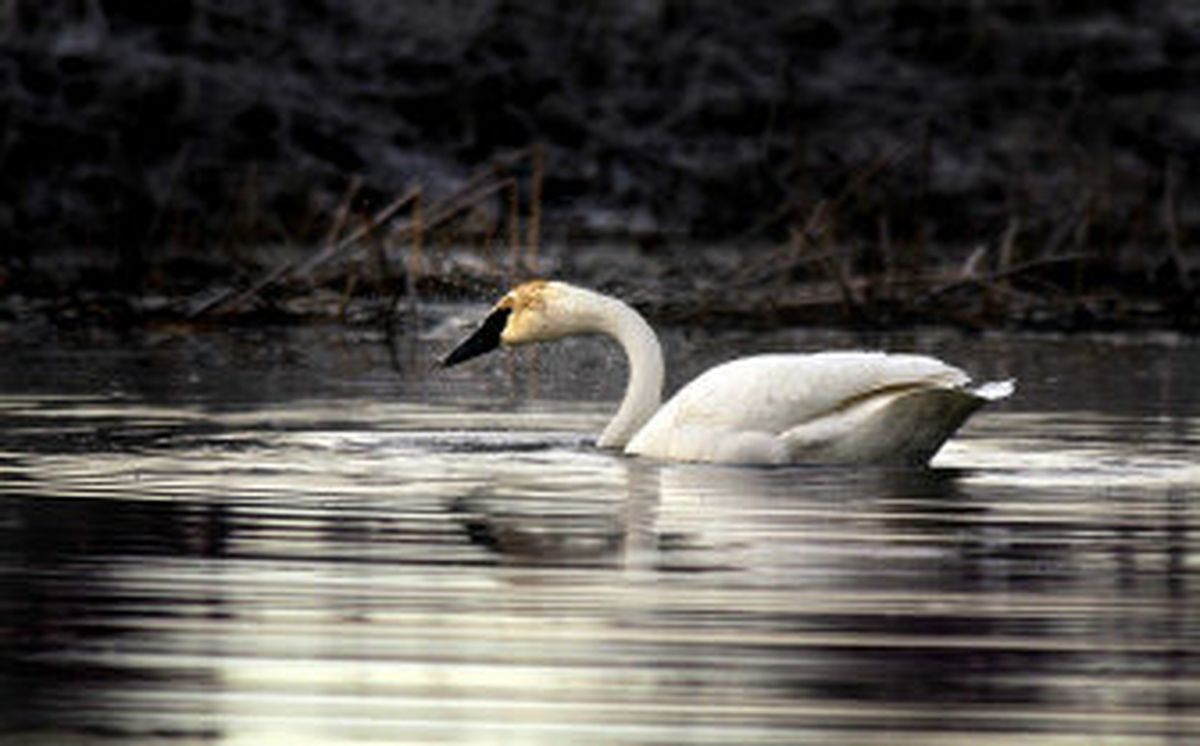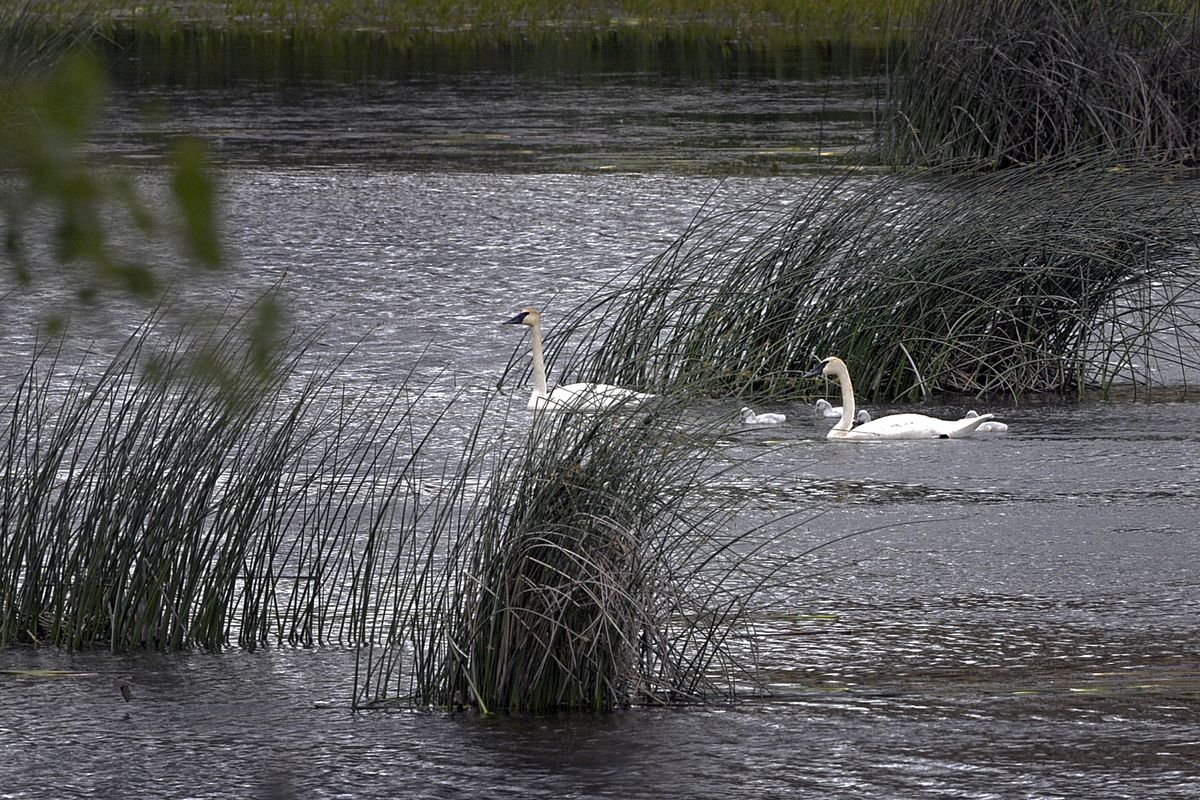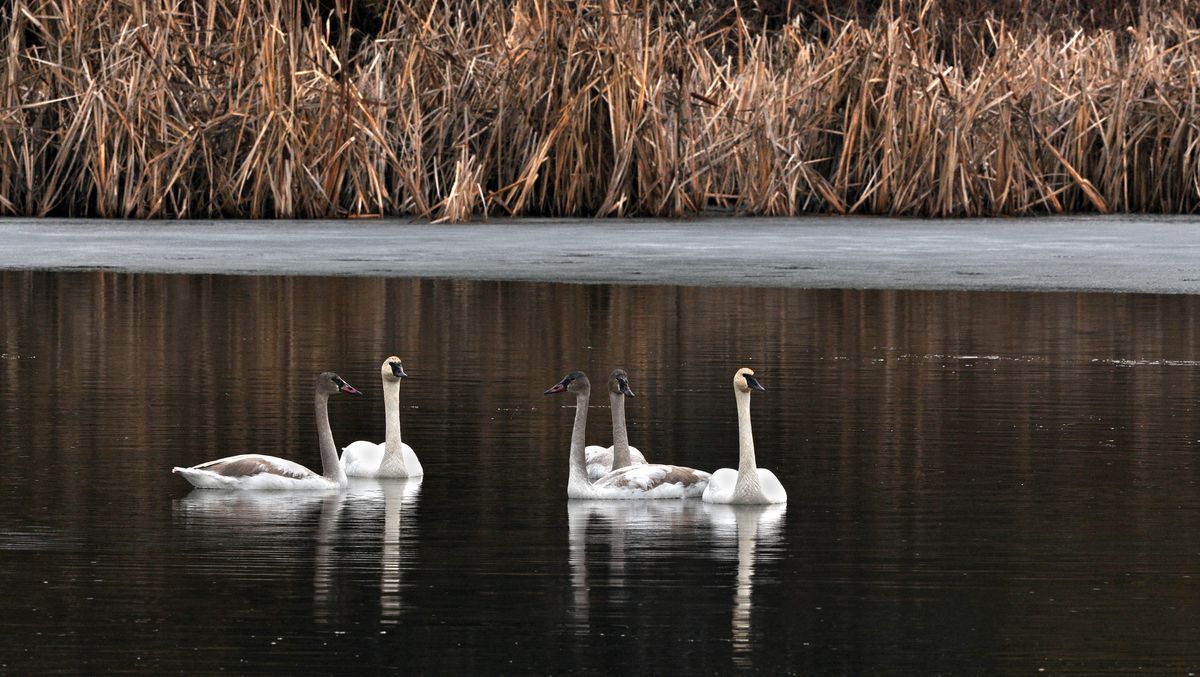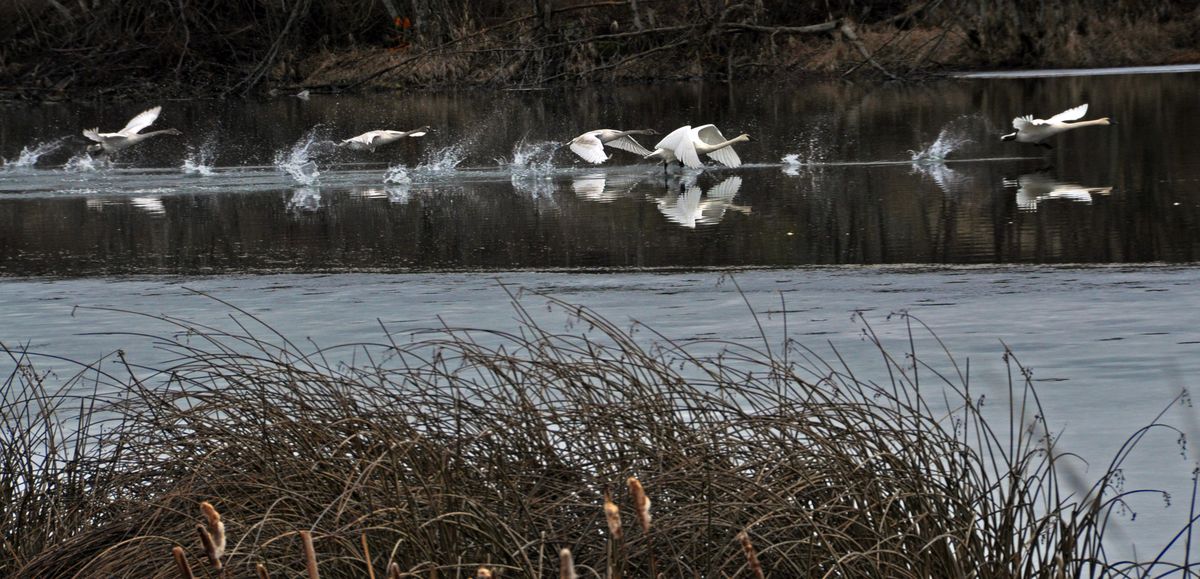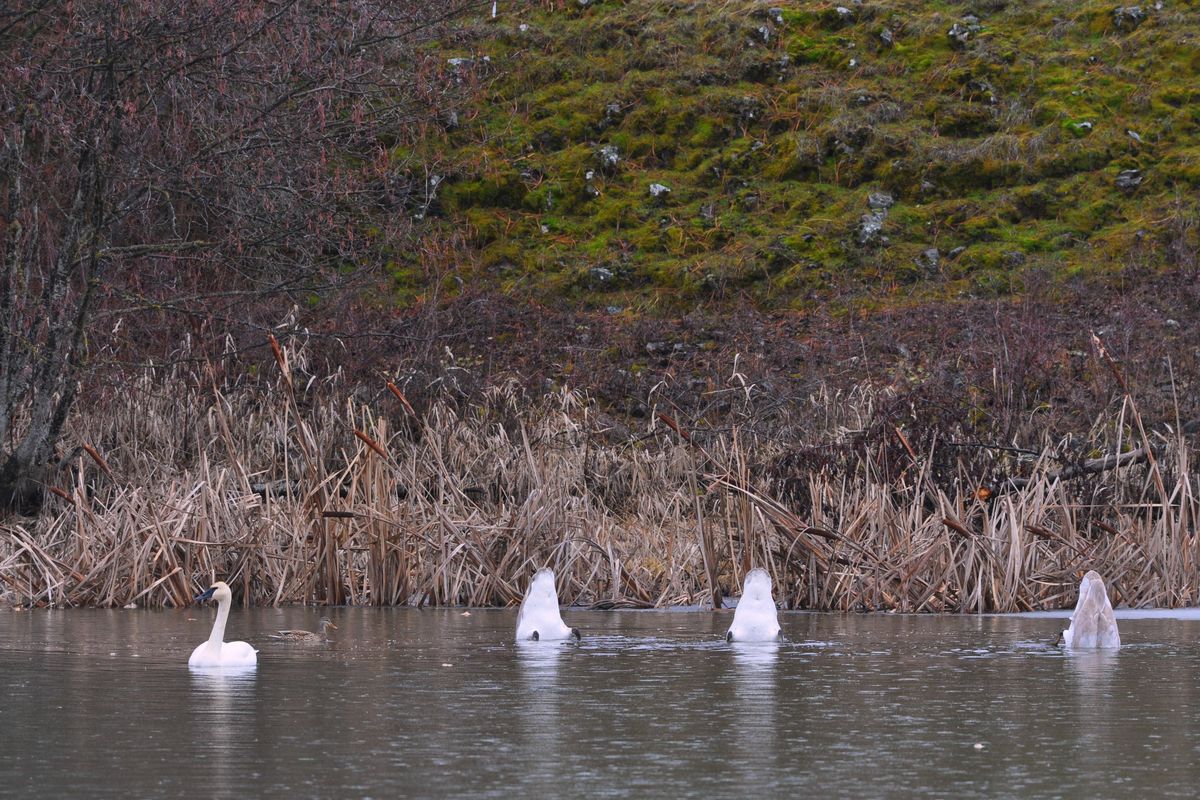Swan’s long run at Turnbull Refuge ends on high note
A male trumpeter swan – we're calling him Solo – has returned to Turnbull, where he favors Cheever Lake. (File / The Spokesman-Review)
An elderly trumpeter swan that could teach sports teams a thing or two about commitment, determination and achievement has ended his long run at Turnbull National Wildlife Refuge.
The swan apparently disappeared shortly after returning, as he had for decades, to Cheever Lake during this year’s first winter thaw.
Dubbed “Solo” during his two decades as a widower, the swan was 35-48 years old this year, well past the general 20- to 30-year maximum life expectancy for the species.
Trumpeter swans, named for their distinct trumpet-like call, are the largest native waterfowl species in North America.
Banding records confirm Solo was at least 35, but refuge biologists say he could have originated with the series of cygnet introductions at Turnbull that started in 1963 to boost the bird from its endangered species status.
Solo was first banded at Turnbull in 1983 as he and a mate guarded their new brood. He soared high with the success of raising families for years. During the trumpeter heydays at Turnbull, swan pairs successfully mated 56 times from 1967-1987, producing 122 cygnets. Of those, 83 survived to flight age.
Solo fathered up to a third of the crop, said refuge biologist Mike Rule.
But Solo also suffered the lows of losing his mate on her nest to a predator in 1988. Swans mate for life, but after the loss of a partner, they’ll eventually look for a new one. Solo’s search ran two decades.
Rule banded him again in 1995, but when that band fell off, refuge staffers could identify him by his tradition of returning with the first hint of open water on the refuge, regardless of whether that was January or March.
He would fly near the refuge headquarters trumpeting his heart out as if to announce, “I’m baaack” before settling in through summer and fall until the first freeze-up.
“Solo lost his bands a few years ago,” Rule said in a 2009 interview. “We’ll know whether it’s him out there by his routine. If there’s a swan that calls and flies up and down Pine Creek every morning after April 15, after the migrant swans leave, it’s probably him.
“Only twice before has a swan stayed longer than April 15, and that was likely because Solo was here to lure them.”
Solo’s relentless defense of his territory may have discouraged other swans from moving in.
“He’d even defend Winslow Pool against geese,” Rule said. “Male swans don’t usually sit on nests, but he incubated goose eggs after driving off the parents one year.”
Solo wasn’t so obvious in previous years when he was just one of the crowd. After seven years of reintroduction efforts, trumpeters had eight nests on Turnbull Refuge in 1970 and all of the cygnets survived. The refuge had installed a cyclone fence with barbed wire across the top to protect the flock.
The special treatment for swans at the refuge faded in 1976.
“We used to aerate the display pond and provide supplemental feed,” Rule said. “A decision was made to stop that and go to a more natural situation, forcing the birds to migrate.
“That was a disaster for the trumpeters. The birds dispersed and mortality increased significantly. Adult birds got lost and pairs broke up and few birds returned to the refuge.”
Four adult trumpeters banded in August of 1978 were seen near Prineville, Ore., in December of that year.
The last recorded citing of the young produced by those birds was two years later near Revelstoke, British Columbia.
But Solo returned every year. Rule suspects he wintered at one of the area’s big lakes or possibly the Spokane River, but that was never confirmed.
After his mate was killed in 1988, the cygnets dispersed. Solo kept coming back alone.
He had short flings, but nothing fruitful. While he still had the swagger to attract the occasional mate, biologists speculated he didn’t have the juice to reproduce.
But the geriatric swan proved them wrong in 2009, when he finally paired with a mate and sired the first clutch of trumpeter cygnets in 22 years. He and his mate returned for a repeat last year, producing five cygnets – an increase of one from the previous year.
They appeared poised for a three-peat in January, when they returned to the first thaw of open water at Cheever Lake, as Solo had done for decades.
Family groups usually remain together, but only through the first or second winter. The flock seemed to have strong family ties.
But since Jan. 26, only one adult and four yearling cygnets have remained at the Winslow-Cheever area near the refuge headquarters.
Rule believes that Solo and one cygnet were lost at that time, ending Solo’s reign.
A male swan found dead at Badger Lake around that time died from lead poisoning, according to the Washington State University veterinarian who performed the necropsy. The source of the lead is unknown, but it could have been a fishing sinker or spent shot, which swans are known to ingest while foraging on pond bottoms. Ingesting just three lead pellets will kill a swan, Rule said.
Lead shot is banned from use in waterfowl hunting, but it’s legal to use for other types of hunting.
“Unfortunately, WSU did not get a definitive age estimate on the bird,” Rule said.
“I don’t think it was hefty enough to be Solo. But I don’t know.”
Refuge staff and bird watchers are keen to see how the rest of the spring plays out for Solo’s family.
“We still have a breeding-age female, Solo’s widow, that can form a new pair bond with one of the male trumpeters we see coming through the refuge area in early spring,” Rule said.
The number of trumpeters in the area has grown in the past few years, making that more likely.
Solo’s three surviving cygnets from 2009 and the four survivors from 2010 are a big boost to the system.
“They will reach breeding age in 2013 and 2014, respectively,” Rule said.
“Quite a few trumpeter swans have been seen in the area since the first of the year, and any one of them could be potential partners for Solo’s offspring.”
Solo’s disappearance is sad news, he said, “but he may have opened the door for the restoration of trumpeters at Turnbull with his efforts these past two years.”


